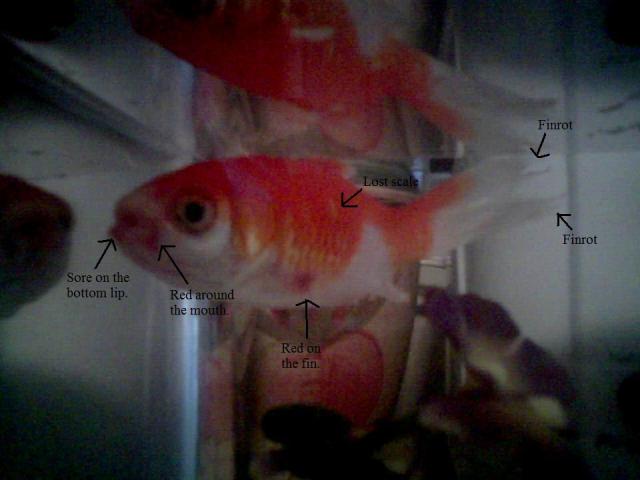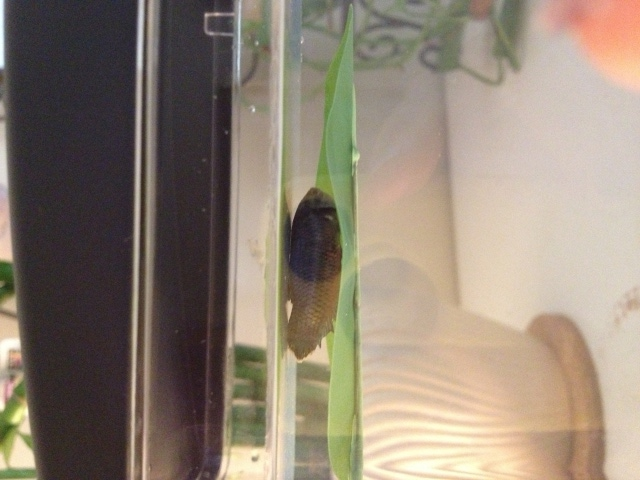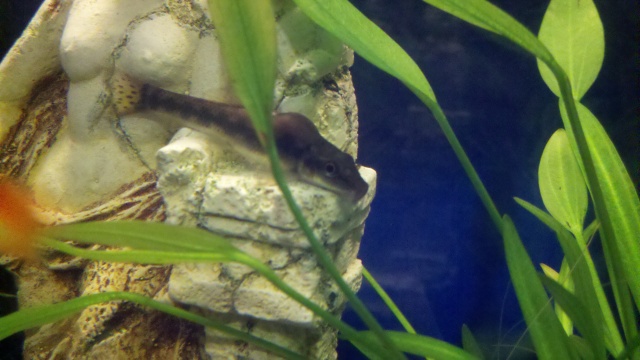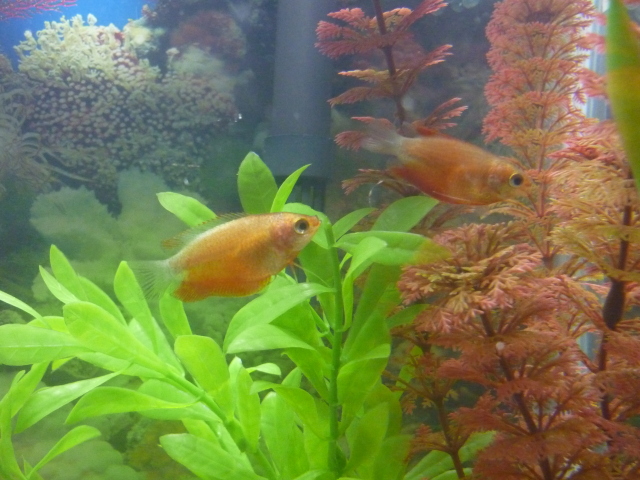QuestionFish tank - 50 gallon - have been set for 2 yrs
Guppies - 15
Algae eaters - 2
water has been tested - fine
side tank filter
All of the fish have died
One of the algae eater died yesterday - had a red spot on tummy
Last algae eater alife this morning
What is the best procedure to start all over again?
What could have been the reason for losing all my fish?
AnswerHi Mary Lou;
That's a shame. I'm sorry that happened to you and your fish. Red spots, reddish streaks, ulcers or bloody-looking areas indicate a bacterial infection. This often is caused by dirty gravel and overfeeding. Rotting food and excess waste can grow some pretty nasty bacteria that can infect your fish if they come into contact with it. (Yuck!) We all overfeed from time to time. We just have to remember to clean up after ourselves when we do.
If you don't think that overfeeding and/or dirty gravel was the problem, it may have simply been a disease that took hold of them and spread to everyone. Who knows. Sometimes the cause is never discovered but we start over with everything doing fine from there on.
Since there are no fish left to consider, the best thing to do now is rinse the gravel, tank, filter and all the decorations very well. You can use hot water if you want to. If you are really worried, clean everything and fill the tank back up. Add a 1/4 cup of common household bleach and let it run for a half hour or so. Drain and rinse, rinse, rinse......until you no longer smell bleach on anything. Large amounts of chlorine remover will get rid of leftover traces of the stuff. I keep dechlor made by a company called WECO on hand in case I need to sterilize anything with bleach. Works very well.
Set it back up and start over with new fish. It will go through a break-in period for the first 6 to 8 weeks, so I have included a copy of my article on new tanks to help you through it.....
**********
New Tank Syndrome or Break-in Period
So you have a new tank and you filled it up, put the filter together, mounted the heater into place and turned on the lights. You have all the plants and decorations where you want them....
You are ready for fish.
But, your filter is not ready for a full tank of fish yet.
The filter is running and moving the water and cleaning out crud, right? Of course!
But a very important part of your filter is the part you can't see. An aquarium filter removes the larger visible stuff, but it also must remove the dissolved fish waste that turns into ammonia in the water. To do this, special bacteria must grow in the filter system and on the particles of gravel in the bottom of your tank. This process occurs even on a limited scale in little fish bowls that have no filter in them.
This is "New-Tank Syndrome" or the "Break-in Period". The entire process takes 6 to 8 weeks to complete because these "nitrifying" bacteria grow quite slowly.
Start off with only two hardy fish for every ten gallons of water and don't add more until the 6 to 8 weeks has gone by. Hard to be patient, but it is worth it to keep your fish alive and healthy. As a matter of fact, the bacteria cannot develop without fish in the tank. You can let that tank sit forever without fish in it, but as soon as the first fish goes in the process begins. Avoid changing the filter pads during break-in. This removes the bacterial colonies that are essential to a balanced aquarium. You can rinse the filter pad out in a container of aquarium water. This will preserve most of the bacteria colonies while still allowing your filter to flow freely. Even using bacteria additives and water conditioners when you first set up the tank will not make a tank cycle by itself. If there are no fish to provide food (fish waste) for the bacteria, the beneficial bacteria cultures will die and you will have to start the colonies all over again once fish are added to the tank.
Feed your new fish VERY lightly. Any excess food will cause additional waste your system cannot afford to have right now. If you see food floating around or lying on the plants and gravel after five minutes, too much food is going into the tank. Cut back a little each time you feed until it is ALL gone 5 minutes after you feed them.
During this "break-in period" your tank will become cloudy and milky looking. You may have to tolerate this for the entire break-in period but it is only temporary. Changing 25% of the water three times a week until the break-in period is over helps a great deal. Changing water reduces the ammonia and nitrites that rise while the bacteria continues to multiply. If ammonia and/or nitrites become too high, your fish will become stressed and possibly die. Use a good water conditioner when you replace the water and make sure it is the right temperature to avoid shocking your fish.
When the break-in is over after 6 to 8 weeks and there are no nitrites or ammonia present in the water you can slowly add more fish. Add one or two every week until you reach the desired population. This allows the bacteria to adjust to the new population every time before adding more. Monitor the nitrites and ammonia to be sure they don't come up. If they do, make a 25% water change and check them again. Don't add the next fish until the levels are down again.
The safe maximum population for any size tank is one inch of adult fish for every gallon of water in the tank. Do some research to be sure of the fish you are interested in. Even though they are small when you buy them, you have to base your population calculations on full-sized adult fish. Many hobbyists have up to two inches per gallon but this can be risky. If a water quality issue arises or a disease occurs it will spread fast and furious in an over-populated tank. In any case, 25% water changes every week to two weeks are absolutely essential for the health of your fish.
Following these guidelines will help you get your new tank on the right track.
**********
Followups welcome
At Your Service;
Chris Robbins
Come on over and join us on the freshwater fish forum at About.com to get even more information too;
http://freshaquarium.about.com/od/questionsanswers/a/naavigateforum.htm
My member name is ChrisR62. See You There!

 Goldfish diseases
Question
Fantail goldfish
Hi Jaymie,
&nb
Goldfish diseases
Question
Fantail goldfish
Hi Jaymie,
&nb
 My goldfish is sick.
QuestionSick fish
QUESTION: My goldfish is sick
My goldfish is sick.
QuestionSick fish
QUESTION: My goldfish is sick
 Bought Beta after had been in fight in store... Help!
Question
Nemo resting on his ha
Hello. I was in
Bought Beta after had been in fight in store... Help!
Question
Nemo resting on his ha
Hello. I was in
 Odd lumps
Question
algae eater
I have got 2 fish that just became
Odd lumps
Question
algae eater
I have got 2 fish that just became
 Red Dwarf Gouramis.
Question
Red Gouramis
I recently bought to red dwarf go
Red Dwarf Gouramis.
Question
Red Gouramis
I recently bought to red dwarf go